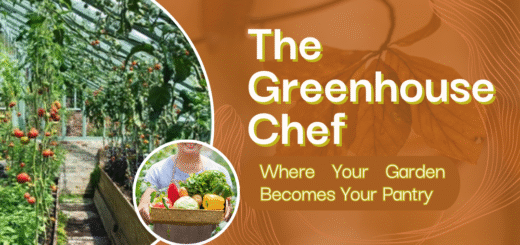From Garden to Table: Weaving Your Harvest into Daily Life
The true magic of a greenhouse unfolds not just in the growing, but in the gathering and the giving. It’s the quiet satisfaction of walking out to your glass-enclosed Eden and returning minutes later with the ingredients for tonight’s meal, still warm from the sun and vibrant with life. This is where cultivation transcends hobby and becomes deeply woven into the fabric of your daily life—a source of nourishment, creativity, and connection.
Harvesting is the culmination of your careful work, and doing it right ensures the highest quality flavor and the longest-lasting bounty. It’s a practice of keen observation and a gentle touch.
The Art and Science of the Harvest
Knowing precisely when to pick is a skill honed over time, but a few guidelines can steer you right.
- The Tomato Test: Forget generic “redness.” A truly ripe tomato will detach with the slightest upward twist; if you have to tug, it’s not ready. For heirlooms, look for a deep, rich color and a feel that’s firm yet slightly yielding, like a perfectly ripe avocado. The bottom (blossom end) will often feel soft first. For cherries, taste is the ultimate test—pop one straight from the vine.
- Leafy Greens: The Cut-and-Come-Again Method: For lettuces, chard, and kale, never pull the whole plant. Instead, use sharp scissors to harvest the outer, mature leaves about an inch from the base. This signals the plant to keep producing new growth from the center, granting you a continuous harvest for months.
- The Herb Rule: The essential oils that give herbs their flavor are most concentrated just before the plant flowers. For basil, mint, and cilantro, this means regular, light harvesting. Pinch off the top sets of leaves, which will also prevent flowering (bolting) and encourage a bushier, more productive plant.
Preservation: Capturing Summer in a Jar
When your zucchinis achieve marauder size and your tomato plants become overwhelmingly generous, it’s time to preserve the abundance.
- The Flavor Bomb: Herb Ice Cubes: Don’t just freeze floppy herbs. Chop fresh basil, dill, or oregano, pack them into ice cube trays, top with olive oil or melted butter, and freeze. These flavor bombs are perfect for instantly elevating pasta, sautéed vegetables, or a searing steak straight from the pan.
- Quick-Pickling: Your Weeknight Secret: This is the fastest way to preserve a glut of cucumbers, green beans, or radishes. Bring a mixture of equal parts water and vinegar (white, apple cider, or rice) to a boil with a tablespoon of salt and two of sugar per cup of liquid. Pour this hot brine over your vegetables in a jar, add spices like mustard seed, peppercorns, or dill, and seal. They’ll be ready in hours and keep for weeks in the fridge.
- Concentrated Sunshine: Slow-Roasted Tomatoes: When you have more Romas than you can handle, slow roasting is the answer. Halve them, toss with olive oil, salt, and thyme, and place them in a 200°F (95°C) oven for 4-6 hours until they’ve shriveled and intensified in flavor. Pack them in jars covered with olive oil and freeze. They are a taste of August in the depths of February.
Weaving It Into the Rhythm of Your Life
The harvest should inspire your kitchen, not overwhelm it.
- The Sunday Ritual: Make a weekly harvest round a non-negotiable part of your routine. Gather what’s at its peak and let it dictate your meal planning. A basket of shiny eggplants and peppers becomes the foundation for ratatouille. A handful of various basils dictates a night of homemade pesto.
- The Gift of Abundance: A surplus is an opportunity for connection. A jar of pickled beans, a bottle of rosemary-infused oil, or a simple bouquet of fresh herbs is a more meaningful gift than anything store-bought. It’s a share of your passion and your patch of sun.
- The Cook’s Garden Mindset: Start growing what you truly love to cook. If you adore Thai food, dedicate space to lemongrass, Thai basil, and bird’s eye chilies. If Italian is your staple, you need a dedicated San Marzano tomato plant and a row of Genovese basil. Let your culinary preferences guide your planting list.
This integration is the final, rewarding loop in the cycle of growth. It closes the gap between the soil and the plate, transforming you from a consumer into a creator. It’s where the patience of nurturing a seedling is repaid with the instantaneous joy of flavor that is simply unavailable any other way. This is the heart of the garden-to-table life: a continuous, delicious conversation between your hands, your greenhouse, and your kitchen.


